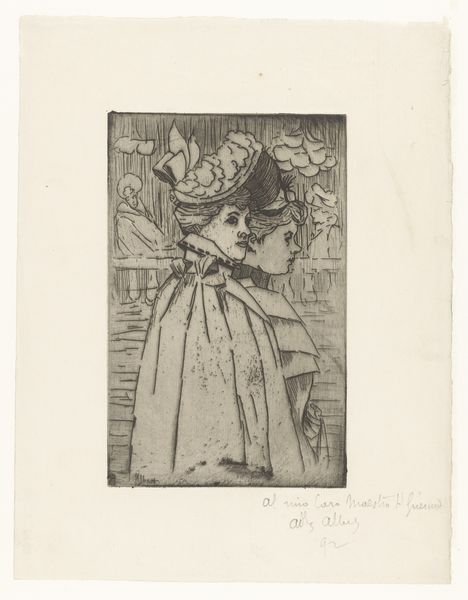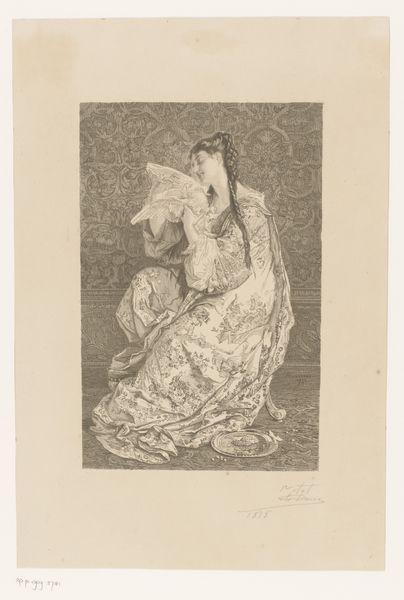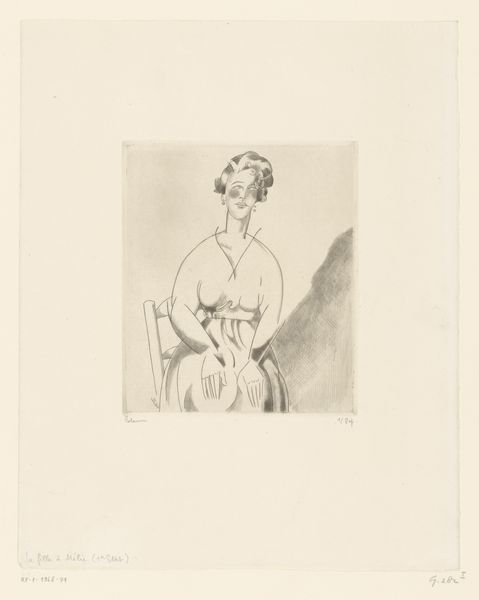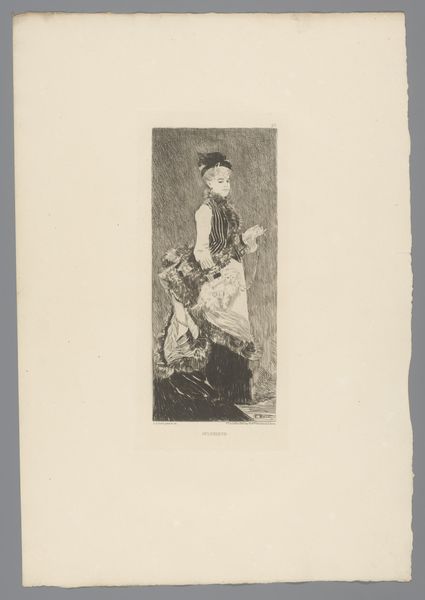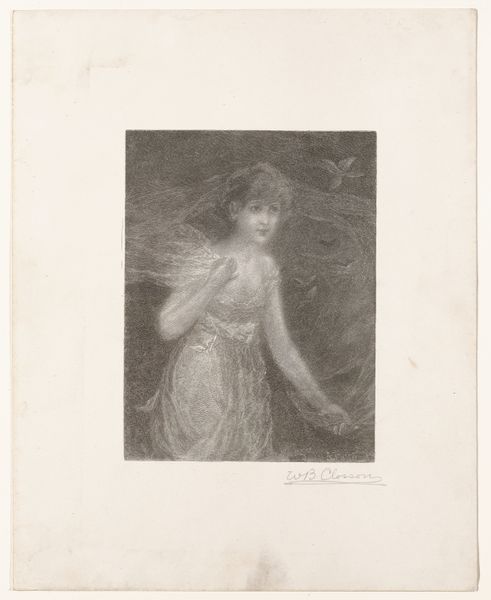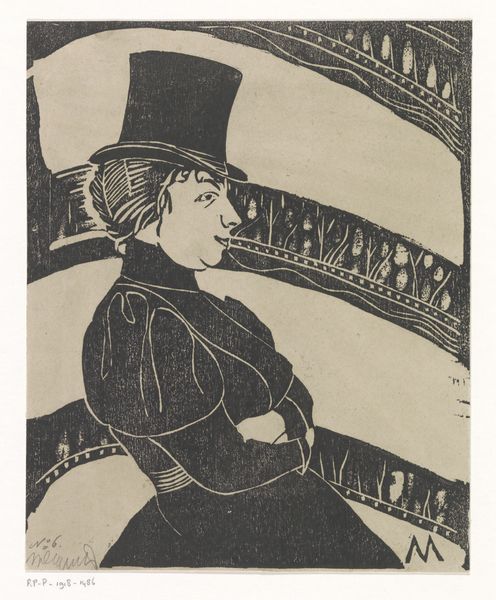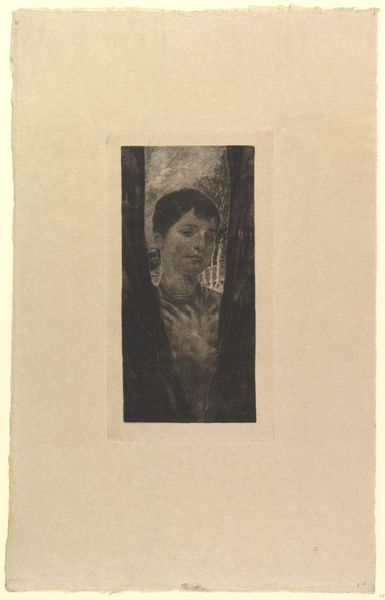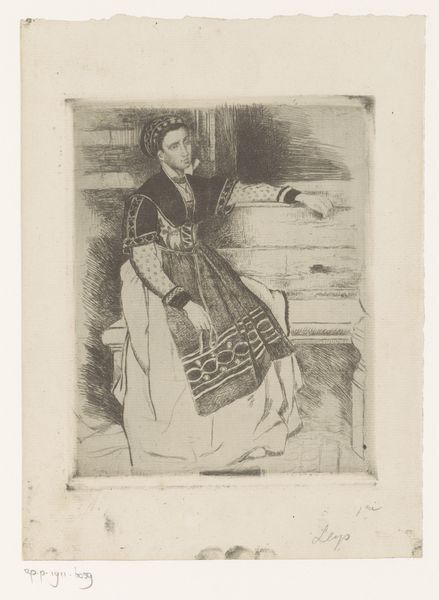
drawing, print, etching, paper
#
portrait
#
drawing
#
toned paper
#
woman
#
light pencil work
# print
#
impressionism
#
etching
#
paper
#
united-states
#
genre-painting
Dimensions: 195 × 175 mm (image); 340 × 267 mm (sheet)
Copyright: Public Domain
Curator: We're looking at "In the Opera Box, No. 3" by Mary Cassatt, an etching and aquatint created around 1880, presently held at The Art Institute of Chicago. Editor: My first thought is how wonderfully suggestive the scene is, created through this delicate network of etched lines and tonal washes. There is an intimacy; despite the public setting, we see a woman enclosed by darkness. Curator: Indeed, and note how the use of etching and aquatint, particularly on the toned paper, allows for such a range of textures. We see the rough materiality of the paper itself contributing to the overall atmospheric effect, subtly speaking to the labor of its making. Cassatt challenges the established hierarchy that elevates painting above the supposedly lesser media of printmaking. Editor: The fan she holds becomes a kind of emblem for the artifice and unspoken language of social encounters. We see glimpses of the audience in the background, so who is she observing, and is she in turn being observed? The entire scene speaks of layered gazes. It evokes the complexity of female identity and experience during the late 19th century, an experience carefully coded by fashion, ritual, and etiquette. Curator: I think examining the industrialization of leisure during this era is important, too. Cassatt, being a woman artist of means, reveals a specific perspective— one shaped by her own social positioning. The print as a medium speaks volumes, as it democratized access to art through multiplication. Editor: But this act of observing... isn't this precisely what draws us to such scenes? The play of looking and being looked at reveals an intrinsic human element—our need for connection, masked by societal restraints. The theater is the perfect location. This composition speaks to more profound anxieties about performance, observation, and selfhood. Curator: That reading allows for understanding the interplay between the personal, expressed by the woman's subjective view, and larger forces, expressed by commodification and technological advancement that were then restructuring visual culture and the lives of women. Editor: A powerful and, dare I say, still timely representation. Curator: Exactly, it reveals artmaking as enmeshed with the wider, everyday world that’s often lost to those solely devoted to beauty.
Comments
No comments
Be the first to comment and join the conversation on the ultimate creative platform.
